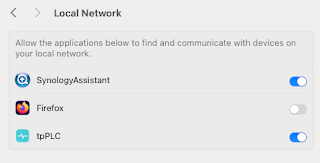So this is not quite Today I Learned, as I discovered this a few days back, but that doesn't work quite so well as TIL ....
Jenkins has a rather nifty REST API, where all/most of the common functions can be invoked via cURL commands.
In order to demonstrate this, I'd previously installed Jenkins onto a Virtual Server running Ubuntu, and, having created a basic Hello World Job, ran through the steps to manage the lifecycle of the job via my Mac's CLI.
Firstly, I needed to create an Access Token, using the Jenkins GUI: -
http://192.168.1.10:8080/user/hayd/configure
This generates a nice long hexadecimal string of gobbledegook, which I then use via my CLI invocations: -
Set the environment variables
export USER="hayd"
export ACCESS_TOKEN="11eec6f237adbdc9c61c15b27188d64028"
export JENKINS="http://192.168.1.10:8080"
List the available Jobs
curl --silent --request GET --user $USER:$ACCESS_TOKEN $JENKINS/api/json|jq '.jobs[].name'
of which there's one: -
"HelloWorld"
With that Job name also set as an environment variable: -
export JOB="HelloWorld"
I can then retrieve the Job's configuration: -
curl --silent --request GET --user $USER:$ACCESS_TOKEN $JENKINS/job/$JOB/config.xml --output ~/$(echo $JOB).xml
which returns an XML document: -
ls -al ~/$(echo $JOB).xml
-rw-r--r-- 1 hayd staff 694 20 Dec 14:15 /Users/hayd/HelloWorld.xml
which we can inspect: -
cat ~/$(echo $JOB).xml
<?xml version='1.1' encoding='UTF-8'?>
<project>
<description>Say Hello</description>
<keepDependencies>false</keepDependencies>
<properties/>
<scm class="hudson.scm.NullSCM"/>
<canRoam>true</canRoam>
<disabled>false</disabled>
<blockBuildWhenDownstreamBuilding>false</blockBuildWhenDownstreamBuilding>
<blockBuildWhenUpstreamBuilding>false</blockBuildWhenUpstreamBuilding>
<triggers/>
<concurrentBuild>false</concurrentBuild>
<builders>
<hudson.tasks.Shell>
<command>#!/bin/bash
export GREETING="Hello World!"
echo $GREETING</command>
<configuredLocalRules/>
</hudson.tasks.Shell>
</builders>
<publishers/>
<buildWrappers/>
</project>
Definitely not the world's most exciting Jenkins Job ...
So let's nuke it ....
Delete the Job
curl --silent --request DELETE --user $USER:$ACCESS_TOKEN $JENKINS/job/$JOB/
This doesn't return anything .....
List the available Jobs
curl --silent --request GET --user $USER:$ACCESS_TOKEN $JENKINS/api/json|jq '.jobs[].name'
This doesn't return anything ..... because there's no longer anything to return ...
Ooops, didn't mean to delete it, where's the backup ?
Create a new job from the XML document
curl --silent --request POST --user $USER:$ACCESS_TOKEN --header 'Content-type: application/xml' $JENKINS/createItem?name=$(echo $JOB) --data @$(echo $JOB).xml
This doesn't return anything .....
List the available Jobs
curl --silent --request GET --user $USER:$ACCESS_TOKEN $JENKINS/api/json|jq '.jobs[].name'
"HelloWorld"
Phew!
TL;DR; almost all of the Jenkins GUI pages have their own REST API, as indicated by the link at the bottom of all/most pages: -
which leads to pages such as: -
which provides a useful set of suggestions e.g.
- Controlling the amount of data you fetch
- Create Job
- Copy Job
- Build Queue
- Load Statistics
- Restarting Jenkins




No comments:
Post a Comment